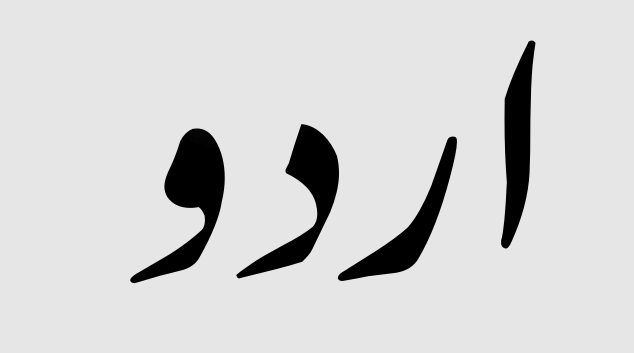Direct Labor Efficiency Variance Formula, Example
Real-time bookkeeping revolutionizes financial management by providing businesses with instant access to up-to-date financial data, improving cash what is price variance flow tracking, expense management, and profitability analysis. Unlike traditional bookkeeping, which relies on periodic updates, real-time bookkeeping ensures continuous transaction recording, automated reconciliation, and real-time financial reporting. This allows business owners to make faster, data-driven decisions, reduce errors, enhance tax compliance, and stay audit-ready. By leveraging cloud-based accounting tools and AI-driven automation, businesses can optimize financial strategy, scalability, and overall efficiency, making real-time bookkeeping an essential tool for growth and long-term success. Based on the standard cost, company spends 5 hours per unit of production.
How Time Tracking Software Can Help Optimize Direct Labor Efficiency
Its core function lies in quantifying this difference, providing insight into whether a business optimally leverages its labor force. circular flow of money A positive variance signals higher efficiency, contrasting a negative variance that suggests lower productivity than projected. In this question, the company has experienced an unfavorable direct labor efficiency variance of $325 during March because its workers took more hours (1,850) than the hours allowed by standards (1,800) to complete 600 units. Where,SH are the standard direct labor hours allowed,AH are the actual direct labor hours used, andSR is the standard direct labor rate per hour.
- Due to the unexpected increase in actual cost, the company’s profit will decrease.
- A decrease in labor productivity is indicated by a negative variance, whereas an increase is shown by a positive variance.
- For example, one unit of cloth requires 0.1Kg of raw material and 1 hour of labor.
- It is very important to measure how close you are to what you expected in order to determine how well labor is utilized on a jobsite.
- The variance will highlight production processes that took up more time than originally anticipated.
For example, one unit of cloth requires 0.1Kg of raw material and 1 hour of labor. It is crucial as it flags discrepancies between planned and actual labor hours, pinpointing inefficiencies. This data prompts a focused investigation into production bottlenecks, enabling corrective action. Addressing these discrepancies enhances resource utilization, productivity, and cost control, which is vital for optimizing operations and ensuring the efficient use of labor within a business or manufacturing setting. If customer orders for a product are not enough to keep the workers busy, the production managers will have to either build up excessive inventories or accept an unfavorable labor efficiency variance.
- Conversely, if the actual hours fall short of the standard, resulting in a negative value, it signifies a favorable variance due to higher efficiency in labor usage.
- Based on the standard cost, company spends 5 hours per unit of production.
- Subscription-based bookkeeping services are transforming the way businesses manage their finances, offering predictable pricing, scalability, and automation-driven efficiency.
- Essentially, labor rate variance addresses wage-related costs, while labor efficiency variance assesses the impact of productivity variations on labor costs.
The standard number of hours represents the best estimate of a company’s industrial engineers regarding the optimal speed at which the production staff can manufacture goods. This figure can vary considerably, based on assumptions regarding the setup time of a production run, the availability of materials and machine capacity, employee skill levels, the duration of a production run, and other factors. Thus, the multitude of variables involved makes it especially difficult to create a standard that you can meaningfully compare to actual results.
Calculation Formula
A favorable labor efficiency variance indicates better productivity of direct labor during a period. A negative variance indicates that more hours were worked than planned, leading to an unfavorable variance of $200. The unfavorable variance tells the management to look at the production process and identify where the loopholes are, and how to fix them. To arrive at the total cost per unit, we need to multiply the unit of material and labor with the standard rate. It is the estimated price of material and labor that a company need to pay to supplier and workers.
Bookkeeping
The labor efficiency variance is also known as the direct labor efficiency variance, and may sometimes be called (though less accurately) the labor variance. Use the following information to calculate direct labor efficiency variance. The direct labor efficiency variance is similar in concept to direct material quantity variance.
See How Spot-r Can Help Your Worksite Improve Labor Efficiency & Productivity
Labor productivity refers to the work output accomplished using the resources available. Productivity is more on getting as much output given a certain timeframe while efficiency is focused on getting the same amount of output in less amount of time. Whereas efficiency is focused more on work quality, productivity is more about work quantity.
The direct labor efficiency variance is one of the main standard costing variances, and results from the difference between the standard quantity and the actual quantity of labor used by a business during production. Additionally the variance is sometimes referred to as the direct labor usage variance or the direct labor quantity variance. If the actual hours surpass the standard hours, the variance is unfavorable, indicating decreased efficiency as more time was spent than expected. Conversely, if the actual hours fall short of the standard, resulting in a negative value, it signifies a favorable variance due to higher efficiency in labor usage. This analysis is vital for assessing and enhancing productivity in various business or manufacturing contexts.
Before production, the company needs to prepare the product standard cost. The standard cost usually includes variable costs such as direct material and direct labor. In order to make a proper estimate, management estimates the standard cost base on the unit of labor and material.
Like direct labor rate variance, this variance may be favorable or unfavorable. If workers manufacture a certain number of units in an amount of time that is less than the amount of time allowed by standards for that number of units, the variance is known as favorable direct labor efficiency variance. On the other hand, if workers take an amount of time that is more than the amount of time allowed by standards, the variance is known as unfavorable direct labor efficiency variance. It is necessary to analyze direct labor efficiency variance in the context of relevant factors, for example, direct labor rate variance and direct material price variance. It is quite possible that unfavorable direct labor efficiency variance is simply the result of, for example, low quality material being procured or low skilled workers being hired.
The issue could be related to machinery, worker skills, or other factors, and identifying the cause could help improve efficiency in the future. The variance is unfavorable since the company used more time than expected. Only recurring processes benefit from tracking this variance; in cases when commodities are produced infrequently or over a lengthy period of time, tracking this variance serves little purpose. First, logistics have to maintain a steady stream of resources that are sufficient to keep workers from how to prepare for tax season 2021 hitting stoppages.
There is a favorable direct labor efficiency variance when the actual hours used is less than the anticipated or standard hours. In some cases, this might be due to employing more skillful workers which results in unfavorable direct labor rate variance (higher wages paid). In other words, when actual number of hours worked differ from the standard number of hours allowed to manufacture a certain number of units, labor efficiency variance occurs.
It compares the actual hours worked to the standard hours that should have been worked to produce a certain amount of output, valued at the standard labor rate. Even though the answer is a negative number, the variance is favorable because employees worked more efficiently, saving the organization money. What we have done is to isolate the cost savings from our employees working swiftly from the effects of paying them more or less than expected. Labor efficiency variance is the difference between the time we plan and the actual time spent in production.
Modern bookkeeping services go beyond basic record-keeping, offering CFO-level insights that help businesses improve cash flow, optimize expenses, and make data-driven financial decisions. Strategic bookkeepers provide real-time financial intelligence, track key performance indicators (KPIs), and ensure businesses remain audit-ready and investor-friendly. By leveraging advanced bookkeeping services, businesses can enhance profitability, improve budgeting, and navigate tax compliance with greater confidence—all without hiring a full-time CFO. Labor efficiency variance compares the actual direct labor and estimated direct labor for units produced during the period. However, let’s say that due to various factors (e.g., machinery issues, worker inexperience), it actually took 2,100 hours to produce 1,000 widgets in that month. An adverse labor efficiency variance suggests lower productivity of direct labor during a period compared with the standard.




